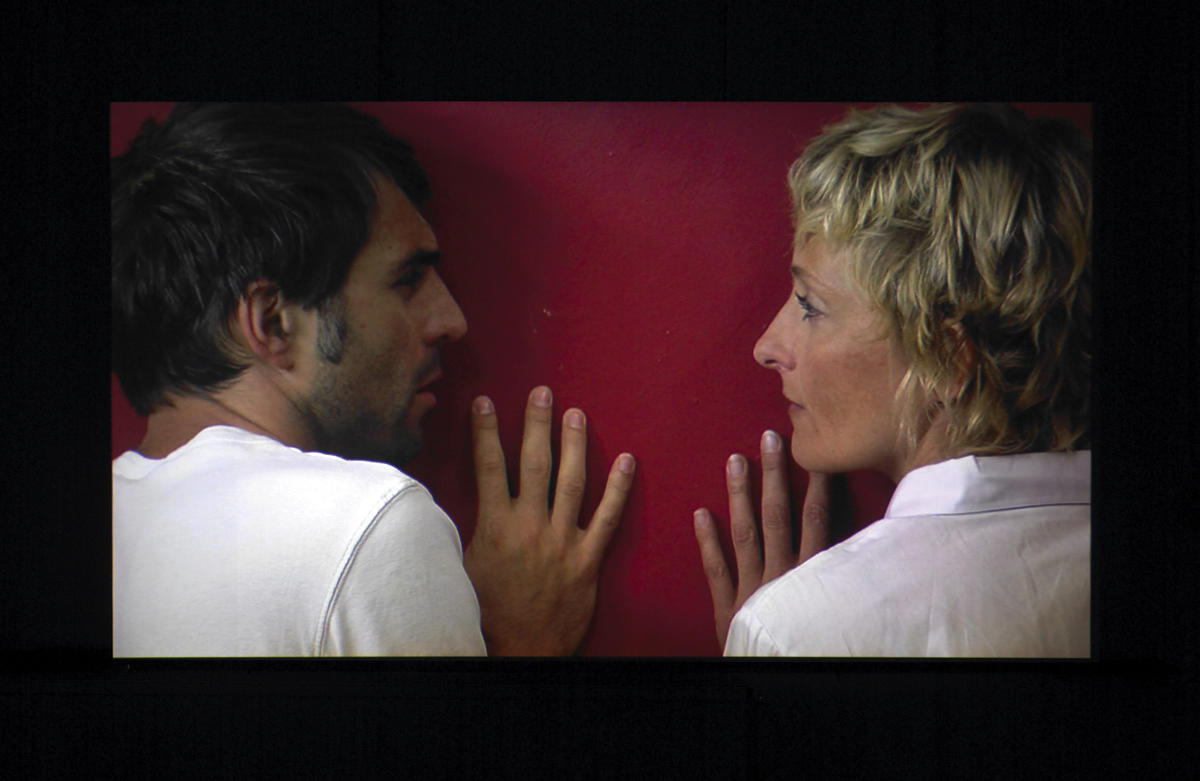
Mechelen
Contour 2007
Various venues
August 18–October 21, 2007
Contour, the biennial of the moving image, takes place in the Flemish city of Mechelen, renowned for its high gothic cathedral and fifteenth-century town square. For the third year running, the event went to lengths to use the city itself as an element of the exhibition. Works were installed in twelve locations, with a guide indicating the history, original function, and contemporary use of each site — including a former hospital dating back to 1200, a sixteenth-century court of justice, a nineteenth century meat market, and a former gardening shop.
The event’s curator, Nav Haq, avoided the temptation to over-thematize these locations, focusing instead on a precise and legible match between the technical requirements of each piece — in terms of light, sound, and the dimensions of the single, split, and multi-screen installations — and the layout of the space. It was a revelation to watch Gabriel Lester’s Nightshade — a nostalgic black and white eulogy to the quirky, melancholic elegance of Flemish cities, with their shabby glamour — in the auditorium of the Pastoraal Centrum, and to see the reflections of Carsten Höller’s hyperactive Flicker Film, with its three overlapping projects bouncing off the polished black floor of the meat market.
‘Decoder’ was the subtitle for this edition of Contour, reflecting a curatorial interest in the transmission of information via the moving image and the manner in which that information is in turn received and interpreted by audiences. Certain works explicitly pondered this thematic: Gerard Byrne’s 1984 and Beyond, for example, involved actors bringing to life a conversation that once took place between science fiction writers, originally published in a 1963 edition of Playboy — the relay of the textual information between the different media, and the laughably off-the-mark predictions for the future made by these specialists, produced a sort of crisis of credibility. So too with Cédric Noël’s multiscreen installation of individuals, each giving an eyewitness account of different events in a manner that suggested they were in some way connected. And in Interview with Saskia Holmkvist, the artist allowed herself to be trained in the language of media presentation — taking tips on the correct posture, body language, tone of voice, and level of eye contact required to read out a prepared statement on the question of authenticity in her work.
Rosalind Nashashibi and Hassan Khan both revisited their own material, exploring the idea of artwork as an archive of visual information that can signify differently depending on the scenario and manner in which it’s presented. Nashashibi’s Bachelor Machines Part 2 twinned footage of previous works with a nutty monologue on the nature of Christianity, Western materialism, and machines, while Khan gained distance from an old series of “embarrassing” filmed improvisations with actors by projecting them alongside explanatory texts and blocks of primary color. Nashashibi’s Flash in the Metropolitan, a collaboration with Lucy Skaer, was shot in New York’s Metropolitan Museum at night using a flashing light, so that the artifacts on display materialized for an instant, then vanished. The work explored the fragmentary nature of museum exhibits and the displacement of their elements from the “greater reality” of their origins.
Several of the projects subtly engaged with the city and its residents. Omer Fast’s De Grote Boodschap, for example, read like a bizarre trailer for a new Mechelen-based soap opera, using a cast of local characters who performed ambiguous roles in a shifting space, touching on questions of intergenerational and race relations. And Mechelen’s historic, colorful, and sometimes comical parades had an airing, courtesy of artists Neil Cummings and Marysia Lewandowska, who excavated the archives of local film clubs Mecina and KFKM.
‘Contour,’ with its compact scale, modest rhetoric, and thoughtfully selected works, felt like an antidote to the often overblown, unrealized ambitions of larger biennials. It appeared to prove that there is mileage in the biennial format yet. Given the right curatorial approach — the biennial’s temporaneity, the opportunities the format provides for site-specific work, for opening up new exhibition spaces, and for seeing work through the prism of a new city — can prove ideal.
www.contour2007.be